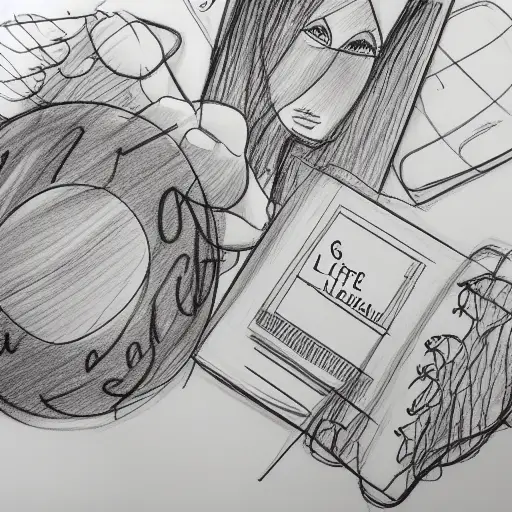When we are disorganized, we can easily get frustrated. We may forget important appointments and feel stressed out. Organizing our lives can help us alleviate these feelings. Here are some life organization tips: Set deadlines for tasks, Create a to-do list, and use a visual aid. By following these tips, we can create a clutter-free environment in our homes and offices.
Getting rid of clutter
Getting rid of clutter is an important aspect of life organization, but it’s also difficult to do. Many people hang on to things because they have sentimental value or just “in case.” Even if you’re ready to let go, it can be hard to let go of something that holds a lot of meaning to you. To overcome this challenge, consider getting an outside perspective.
While it is incredibly tempting to try to organize without decluttering, this approach only serves to hide clutter. Besides, the clutter still takes up space in your mind and adds stress to your life. Moreover, it is a short-term fix, and won’t be sustainable if you have a lot of stuff. Eventually, that clutter will make its way out of your system and into your life again.
Clutter can also affect your mental health, particularly if you have a perfectionist tendency. It can also cause you to procrastinate on important tasks. The good news is that clearing your life of clutter is a great way to improve your mental health. Not only will you feel better and be able to focus on more important tasks, but you’ll have more energy and feel less stressed.
Clutter can make it difficult to concentrate, especially at work. Getting rid of clutter can help you work faster and more efficiently. When you’re less overwhelmed, you can focus on what you have to do instead of hunting for a specific item. In addition to being easier to work with, an organized workspace will save you time, money, and energy.
Setting deadlines
When you’re overwhelmed with work and responsibilities, setting deadlines to meet can help you get more done. Having a deadline forces you to consider all of the steps needed to accomplish a task and how long they’ll take. It helps you prioritize your tasks and stay motivated as you make progress.
Having deadlines is a good idea, but it’s also important to make sure you’re able to meet them. If you don’t meet deadlines, you’ll only be adding unnecessary stress to your life. It’s important to be realistic about the time frame required to complete a task, and you should base your deadline on what is typical for similar work. You should also involve others who are involved in the project when setting deadlines. This way, they’ll be able to participate in the decision-making process.
Deadlines also increase the feeling of urgency. Setting a deadline forces you to sit down and finish tasks before they’re too late. It also gives you an incentive to work more efficiently. If you’re working on an assignment, setting a deadline for yourself means you’ll be more likely to finish it on time, which will make you feel more accomplished and less stressed.
The idea of setting deadlines for tasks is that they will force you to prioritize and complete them according to their importance. Because you have a limited amount of time, you need to make the most of it. The best way to prioritize is to first identify which tasks are urgent, and then identify which ones are not. If a deadline is too far away, you may burn out quickly.
In addition to establishing deadlines, you should always be proactive. Don’t wait until the last minute to start doing the work or research the resources available. By being proactive, you can accomplish all your deadlines.
Creating a to-do list
When creating a to-do list for life organizing, there are many things to consider. First, your list should be easy to read. While it is important to include deadlines, you also need to make sure that the items are attainable. You should start with a small task and work your way up.
While to-do lists are useful for small tasks, they can get cluttered with too many items and multiple projects. To avoid this problem, create an Action Program containing tasks that are most important to you. This will help you to prioritize tasks and reduce stress. Using the Action Program system will help you accomplish more in less time.
Creating a to-do list can be an essential organizational tool. If you don’t make one, you’ll likely miss important deadlines or forget to complete a task. Having a to-do list will help you stay on top of your life and your work.
Another tip for achieving a to-do list is to make it as aesthetically pleasing as possible. Using your favorite color stationery, posting your list on a pretty bulletin board, or even on your smartphone can make it more visually appealing for you. The idea is to inspire you to accomplish the items on your list.
Using a to-do list to prioritize your work will improve your productivity. Having multiple things to do at one time can be exhausting and make it difficult to complete key tasks. A to-do list allows you to prioritize tasks and co-ordinate your schedule, making it easier to achieve your goals.
Creating a visual aid
A visual aid is a tool you use to explain a subject. It should attract the audience’s attention and be easy to understand. The visual aid should be familiar, relevant, and likeable to your audience. It is also helpful if it is made in a style and format that is appropriate for the audience.
Creating a visual aid for life organization requires careful planning. You will need a comfortable space, enough time, and qualified people to make the aid. A pointer is a long thin strip of material that indicates the parts of a visual aid. The latest model of this tool has a battery-operated flash light so that it can point out a portion of a slide in a dark room.
A visual aid can be helpful for a variety of presentations. These aids can include handouts, posters, slides, models, objects, and more. In addition to providing a visual reference for the audience, a visual aid can help a presenter strike the right balance between information and persuasion.
Visual aids can help presenters create the perfect picture by condensing information into a single image or video. They can also engage an audience and increase interest in the presenter’s work. This can boost morale and provide encouragement. And the audience will be more likely to be receptive to the information you are sharing.
Making a journal
Making a journal can help you stay organized and productive. It’s especially useful for content creators with deadlines and business owners who need to keep up with tasks. In addition, you can make use of this type of journal to keep a history of your past activities and record any successes or failures.
The goal of making a life organization journal is to be able to look back and review your entries every once in a while. You can even make a master list on a weekly basis. Whether you’re a Type A person or a Type B, a journal is a good way to stay organized.
Bullet journals are another way to keep organized. Bullet journals have sections that are mandatory and can be customized to meet your needs. Bullet journals are also a great way to show off your creative side. There are many YouTube tutorials available on how to make your own bullet journal. One of the best is by Natalies Outlet, who has created a great tutorial for beginners.
If you want to make a bullet journal, don’t be intimidated by the elaborate layouts you see on social media. Create a layout that works for you and use it as your guide. It’s all about your personality and what you need to stay organized. Then, you can begin incorporating the techniques that work for you.
Color coding your journal is another way to make it more organized. Color coding helps you easily review entries and keep a track of deadlines. You can also use stickers to make your journal stand out. There are planner stickers designed specifically for journals.








